For decades, we’ve produced the bulk of our food through industrial agriculture, a system dominated by large farms growing the same crops year after year, using enormous amounts of chemical pesticides and fertilizers that damage our soil, water, air, and climate. This system is not built to last because it degrades the resources it depends on.
It’s clear that we must shift to more sustainable farming practices to ensure the long-term health and productivity of our agricultural systems. Although“sustainable” is an elastic term that can mean many different things depending on the context, in agriculture, it generally means a model that depends on healthy soil and clean water, minimizes the use of pesticides and chemicals, prioritizes the conservation of water and other resources, and encourages biodiversity of plants and animal species in the system.
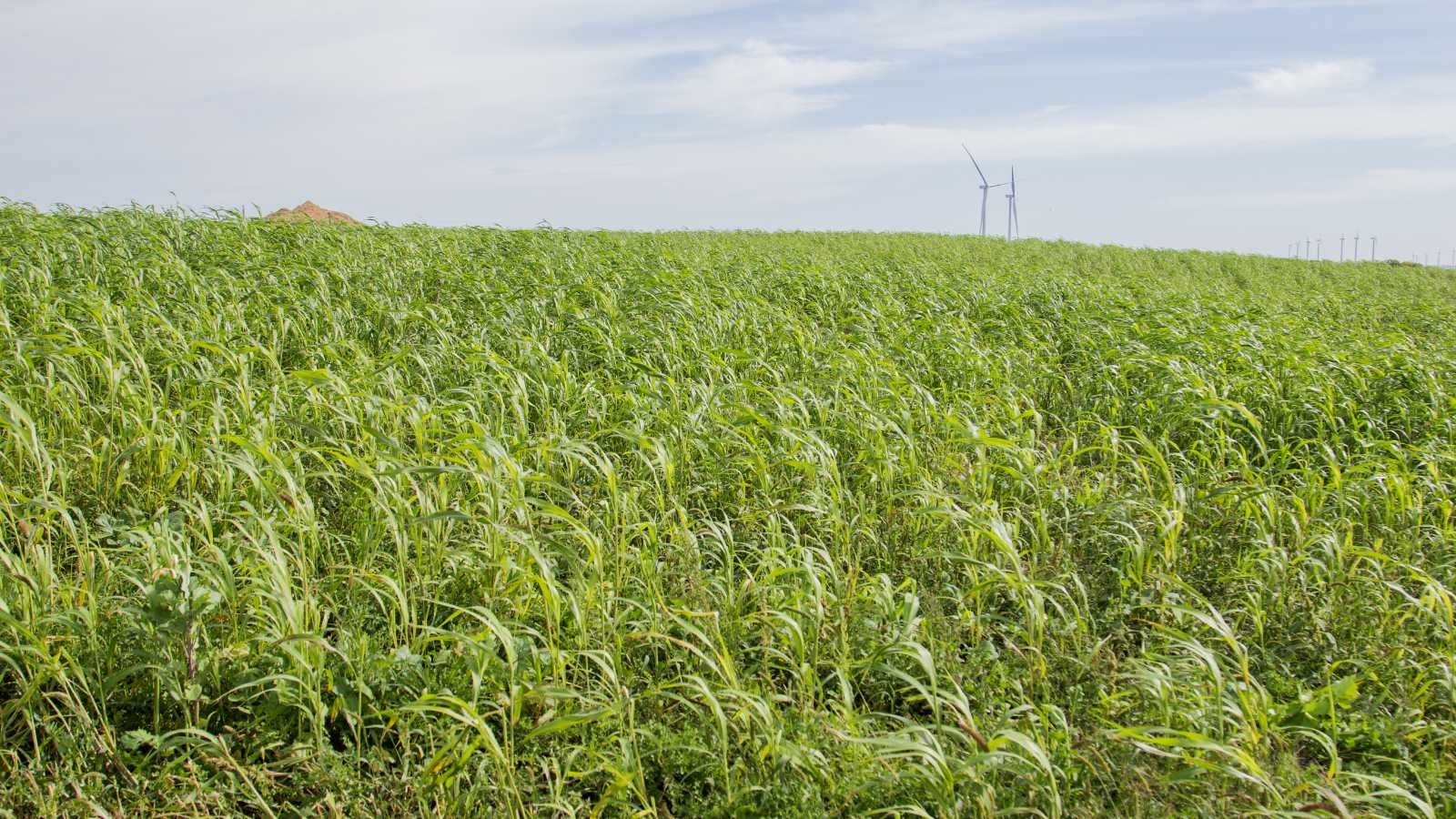
Sustainable Farming Practices
Today more farmers are adopting sustainable farming practices to meet consumer demand and the challenges of climate change that are making resource conservation imperative. Some are even going beyond sustainable to a regenerative model, which attempts to not only stop damaging our ecosystem but actually improve it. In a sustainable farming model, producers incorporate all or most of these practices:
- Rotating crops - Planting a variety of crops in the same field over time rather than planting the same crop, “monocrop,” in that field has many benefits, including healthier soil and improved pest control.
- Planting cover crops and perennials - Cover crops such as clover, rye, or hairy vetch and perennials protect and build soil health by preventing erosion, replenishing soil nutrients, and keeping weeds in check, reducing the need for fertilizers and herbicides.
- Reducing or eliminating tillage - No-till or reduced-till methods, which involve inserting seeds directly into undisturbed soil without plowing, can reduce erosion and improve soil health.
- Using integrated pest management (IPM) - IPM refers to a range of methods to keep pests under control while minimizing or eliminating chemical pesticides.
- Integrating livestock and crops - A growing body of evidence shows that a smart integration of crop and animal production rather than keeping them separate as in traditional practice can make farms more efficient and profitable.
- Agroforestry - By mixing trees or shrubs into their operations, farmers can provide shade and shelter that protect plants, animals, and water resources, while also potentially earning additional income from fruit or nut crops.
- Treating uncultivated or less intensively cultivated areas as integral to the farm - For example, natural vegetation alongside streams, or strips of prairie plants within or around crop fields can help control erosion, reduce nutrient runoff, and support bees and other pollinators and biodiversity in general.
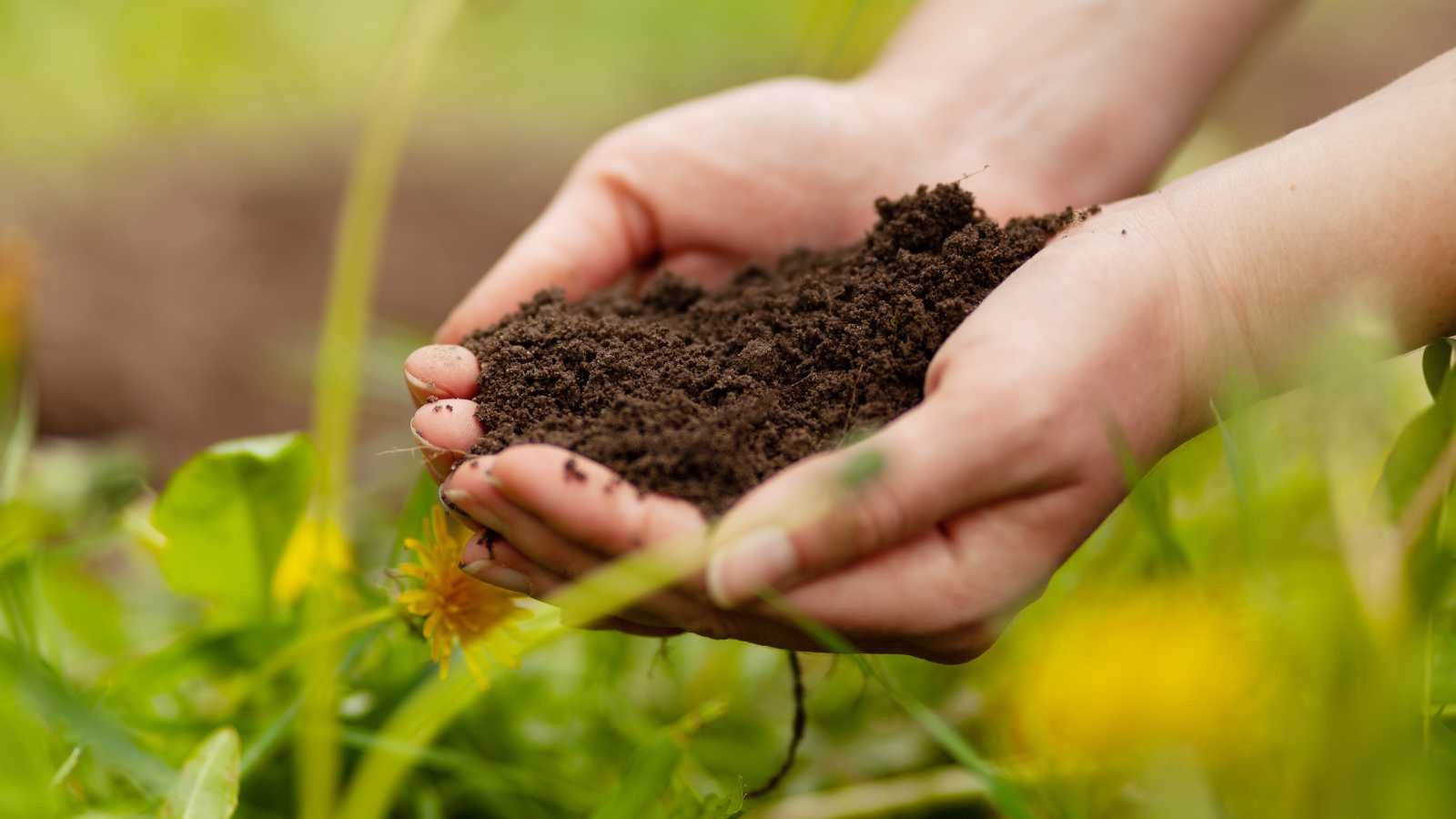
Healthy Soil is the Foundation of Sustainable Agriculture
Every one of these practices contributes to healthy soil, which is the foundation of sustainable agriculture. Without it, plant growth and agricultural production cannot take place. Healthy, living soil promotes healthy crops, holds water like a sponge, prevents pollution, and helps ensure that farmers and their communities can thrive. Keeping farm soils protected and teeming with living organisms can solve many of the problems associated with industrial agriculture.
Nanobubbles Improve Soil Structure
Soils are categorized by their texture, or percentage of sand, silt, and clay. Depending on how much of these elements are present in the soil, it will either facilitate or hinder the absorption of water. When the structure prevents water penetration, the water tends to pool on the surface and is eventually lost to evaporation or runoff, depriving the soil and plant of this vital resource. Conversely, when infiltration does occur in these soils, it is slow. The soil surface is exposed to water for long periods (even though the water is not being absorbed), which can lead to waterlogging and root death.
Compacted soils and soils with high salinity pose similar problems: their structure reduces the movement and absorption of water, which deprives the plant of the nutrients it needs to thrive. When the root zone is deprived of adequate water, crop growth and yields are lower.
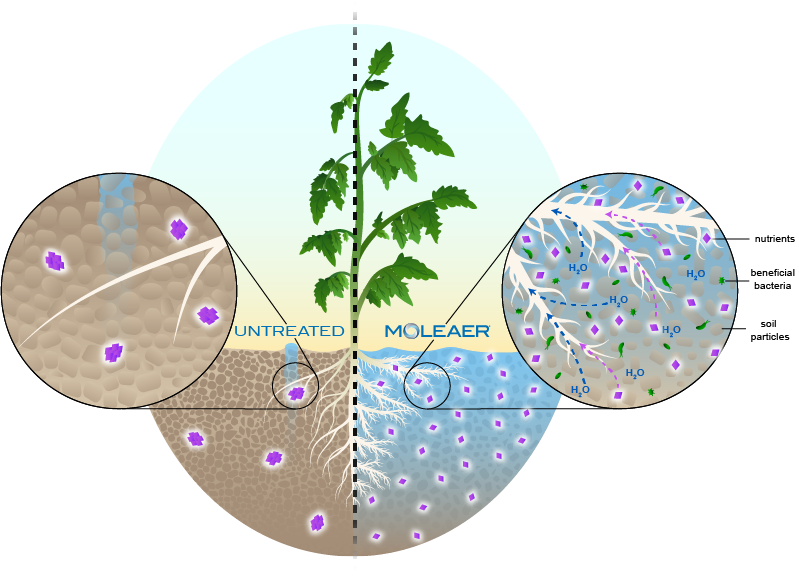
Nanobubbles are a non-chemical solution to soil structure problems. These tiny bubbles–about 2500 times smaller than a grain of salt–move randomly and continuously in water. Water has a high surface tension, which means its molecules form a tight bond that creates a skin or film on its surface. Water tends to pool on a surface instead of being absorbed. Nanobubbles have high internal pressure and hard surface and are in constant motion until they finally burst. When that happens, they break the surface tension of water, which allows the water to infiltrate the soil and the plant instead of pooling.
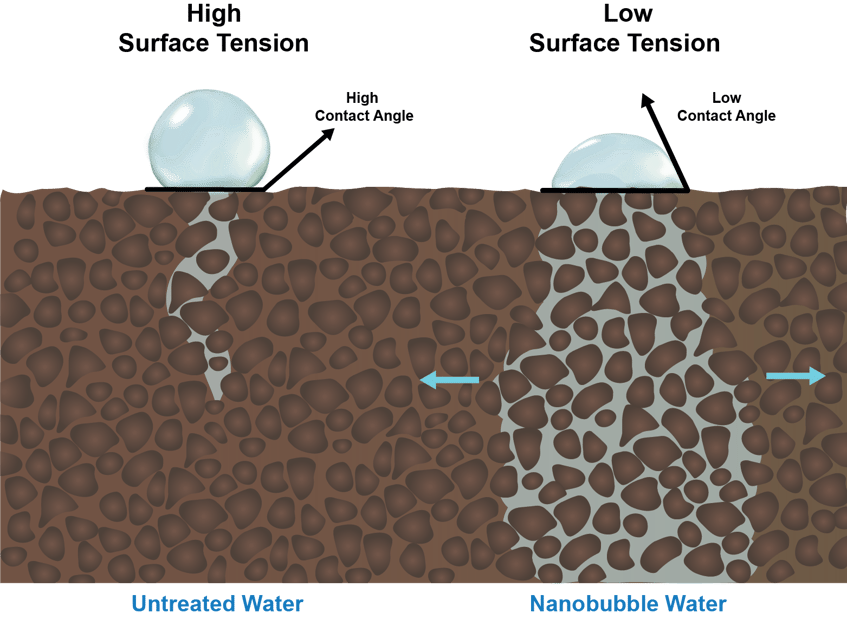
Nanobubbles Improve Water Quality
High-quality irrigation water is essential for a sustainable and productive agricultural system. Nanobubbles have several properties that produce high-quality water. Their constant random motion super-oxygenates the water with high levels of dissolved oxygen (DO).
When root cells absorb super-oxygenated water, their metabolic rates increase and they can continually absorb nutrients and water from the soil, leading to significantly better root and plant development. Root cells grow faster and expend less energy in the absorption of nutrients, while also benefiting from the favorable environment created by higher oxygen levels in the root zone. High-oxygen environments not only encourage the growth of beneficial microbes but also inhibit the growth of pathogens.
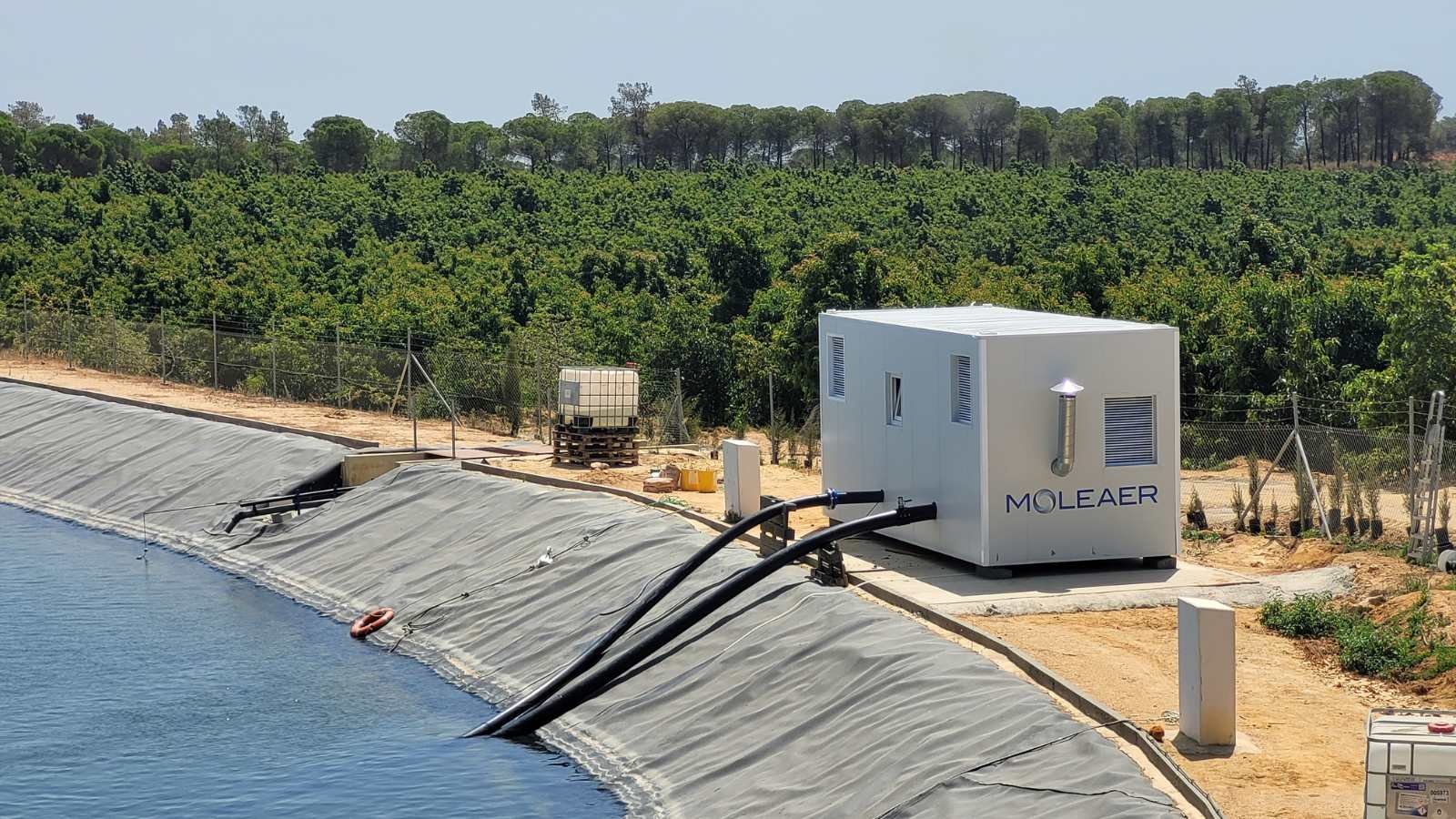
Nanobubbles also enhance oxidation. At a typical concentration of hundreds of millions of nanobubbles per mL and with neutral buoyancy, nanobubbles hover uniformly within a liquid, constantly delivering oxygen where it’s needed to promote natural oxidation. This allows growers to reduce pathogens and reduce their use of expensive and potentially risky chemicals.
Nanobubbles Decrease Plant Disease
Nanobubbles help reduce plant disease without the application of chemicals and pesticides. Oxygen nanobubble-enriched irrigation water creates an aerobic environment that suppresses water-borne pathogens and promotes healthy bacteria.
With a hard, stable surface, nanobubbles naturally scour biofilm and scale from irrigation systems to keep surface clean and reduce pathogenic growth. Biofilm is pervasive on most surfaces in frequent contact with water and acts as a potential refuge for a wide range of plant root pathogens. For example, scientists at the University of California and China Agricultural University recently found that nanobubbles are “detrimental to the mutualistic interactions among microbial species, destabilizing the [molecular ecological] network complexity and size…decreasing extracellular polymers and biofilm biomass.”
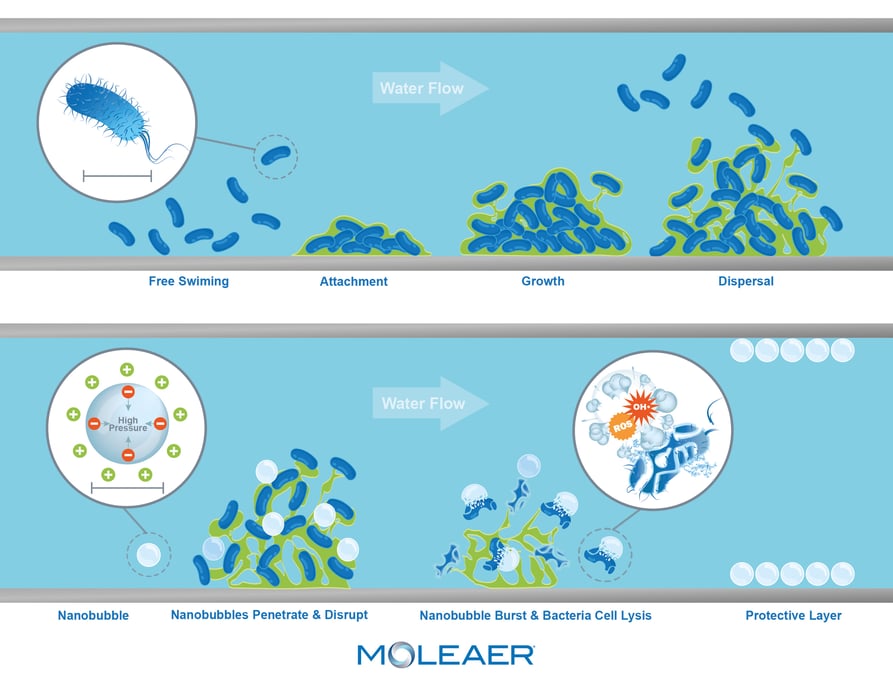
Nanobubbles Decrease Pollution and Contribute to Biodiversity
Because they decrease or eliminate the chemicals normally needed to control biofilm, the use of nanobubbles results in less water pollution and runoff of chemically treated water. The natural soil improvement that results from nanobubble use not only increases crop yields, it also increases soil microbial activity leading to healthier soil. The result is “Healthy, living soil [that] promotes healthy crops, holds water like a sponge, prevents pollution, and helps ensure that farmers and their communities can thrive.”
Resources For Farmers Wanting to Transition to Sustainable Farming
For farmers undertaking a transition to a sustainable farming model, help is available in the form of federal and state grants. There is no comprehensive list of these programs, but Google is a good resource. Here are some major grant and fund programs:
Government Grants and Programs
- The recently passed Inflation Reduction Act of 2022 includes a number of programs aimed at helping farmers make this transition. According to the American Farm Bureau Federation newsletter Market Intel, “The final bill includes nearly $40 billion for agriculture, forestry and rural development. This includes nearly $20 billion in funding for the Agricultural Conservation Easement Program (ACEP), Conservation Stewardship Program (CSP), Environmental Quality Incentives Program (EQIP) and Regional Conservation Partnership Program (RCPP), plus technical assistance.” For details on the programs and how to apply, go to Market Intel.
- The National Sustainable Agriculture Coalition publishes a table with a comprehensive list of federal farm bill programs and grants organized by issue addressed. There are several sections that may apply to farmers looking for grants to transition to sustainable farming, including the sections Conservation and Environment, Organic Production, and Sustainable and Organic Research.
- Sustainable Agriculture Research and Education (SARE) “offers competitive grants to fund research and education projects that advance sustainable agricultural practices in the United States.”
- Farm Raise is a useful app that helps farmers with day-to-day financial management and also contains an extensive Farm Funding Library, which is a list of all farm funding grants available, their requirements, and how to apply. The app has a free version which gives limited access to the library or a complete version for $40/month.
- The U.S Department of Agriculture (USDA) is a behemoth that has many programs in various departments to help transition a farm to sustainability. Here are the ones I found:
- USDA Natural Resources Conservation Service (NRCS) Conservation Stewardship Program (CSP) provides financial and technical assistance to farmers to improve soil health, water quality, and biodiversity on their land.
- USDA Environmental Quality Incentives Program (EQIP) provides financial and technical assistance to farmers to implement conservation practices on their land.
- USDA Organic Agriculture Research and Extension Initiative (OREI) provides grants to support research, education, and extension programs to improve the competitiveness of organic livestock and crop producers.
- USDA National Organic Certification Cost Share Program (NOCCSP) provides financial assistance to organic farmers to cover the cost of obtaining organic certification.
- USDA Beginning Farmer and Rancher Development Program (BFRDP) provides grants to organizations that support the development of new farmers and ranchers.
Some state governments also have programs such as California Sustainable Agriculture Research and Education Program (CSARE) and Massachusetts Agricultural Preservation Restriction program (MAPR). Again, Google will help locate programs in your state. Or check with your state’s farm bureau or agriculture department.
It's worth noting that these programs and their eligibility requirements may change over time, and it is always best to check the most recent information from the relevant agency.
Training And Education Programs
Many non-profit organizations now offer training to farmers interested in transitioning to and/or managing a sustainable farm. The nonprofit FoodTank.com recently published a list of 18 organizations that educate farmers about sustainability throughout the world. Here are four notable organizations that offer some kind of sustainable farming program for U.S. farmers:
- Kiss the Ground is a California-based nonprofit working to regenerate land and reverse climate change through rebuilding healthy soil. They create educational curriculum, campaigns, and media to raise awareness and empower individuals to purchase food that supports healthy soils and a balanced climate.
- Regeneration International provides information and resources and training to farmers that highlights the connection between healthy soil, regenerative agriculture and land use, food, health, healthy economies, and climate change.
- The Rodale Institute is known for pioneering and continually advocating for the use of regenerative agricultural practices.
- The Savory Network advocates, trains, implements and facilitates Holistic Management and regenerative farming practices.
There are likely to be more as sustainability is a very hot topic now. If you conduct a Google search for “sustainable agriculture training” or “sustainable agriculture education” and similar terms you can find more. Many of them are virtual but if you add a location, you may be able to find in-person classes near you.


